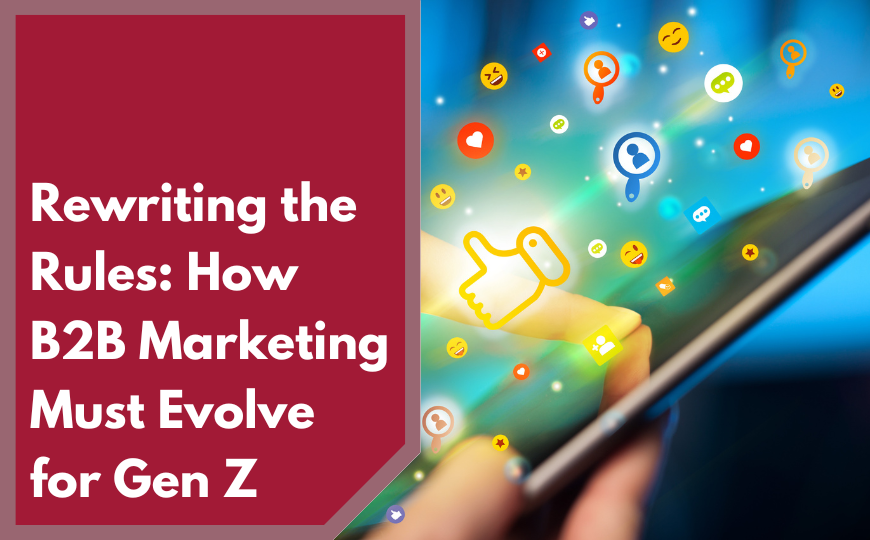B2B multi-channel marketing is typically executed across multiple touchpoints, including both online and offline channels, in order to reach new audiences. But it certainly does not imply having a presence everywhere; rather it is about being relevant in terms of customer experience and messaging in all the channels that a customer expects to find you. Many companies still find it a challenge to keep up with expanding media consumption habits and integrate marketing efforts across different marketing points to effectively build brand awareness and reputation.
The Importance of Multi-channel Marketing for B2B Businesses
Today we consume a huge amount of digital media daily across mobile, tablets, laptops, desktops, and other devices, such as an internet protocol TV (IPTV). And with mobile usage time projected to rise over the next few years, it will cut down time spent on desktops and laptops and even television. So brands have to align their marketing efforts across different channels and formats to keep pace with it. Marketers have to capitalize on core digital marketing activities across search, email, digital video, shopping engines, social networking sites, news sites, etc. and on any device.
According to Gartner research, integrated B2B marketing campaigns across four or more digital channels will outperform single or dual-channel programs by 300%. But nearly 90% of marketers find it a real challenge to connect more than three channels on the buyer journey. But organizations can easily integrate the required data sources and technologies to create and distribute consistent marketing content through more channels. A multi-channel marketing campaign can be the real difference between your brand being seen and standing out among the crowd in today’s competitive market.
B2B multi-channel content marketing can produce a large top of funnel that can be nurtured through to sales conversion. B2B marketing budgets are generally limited and taking a multi-channel approach provides marketers to measure results accurately and be smarter about moving budget from what doesn’t work to more of what does.
Right Channels to Fulfill Your Business Goal
There are as many channels of content distribution as there are types of content and forms of messaging. Your selection of multiple channels will depend on your B2B organization’s desired outcomes for content marketing, the kind of content you develop and the unique habits of your potential customers. The best way to do this is to get to know what resources the product purchasers or managers in your industry trust and turn to for reliable information. Do they attend an annual conference or trade show? Where do they go online to look for information about the latest happenings in the industry? Evaluate each new channel from the perspective of how well it aligns with your audience’s preferences and situation. The choice of content marketing networks should best reflect your core brand.
Creating The Right Content Type
The content type and topic you choose should articulate the fundamental beliefs of your brand. Publish content across multiple channels and devices based on what is relevant to a specific time, place, or situation. Video, text and images are all different mediums and each is better at communicating distinct brand identities.
You also have to find out what is most relevant to your industrial audience and what piques their interest to create content around these. Think of marketing a product in terms of problems and solutions. Taking an educational approach places your company as one that genuinely wants to be a resource for common technical issues and looks to improve customer knowledge and understanding about your product or service.
When your goal is to build brand recognition, focus on ungated content. For instance, for buyers in the awareness stage you can focus on ungated content and even repurpose certain sections for more general ungated content pieces such as infographics and SlideShares. Promote your content across multiple channels via email campaigns, social media updates and blog posts to build trust and move your audience along the buyer’s journey.
Also factor in Search Engine Optimization when creating content so that your potential customers can find your content easily. Use keyword tools like SEMRush to generate topics based on what searchers in your industry are looking for online.
Sharing your content on social media is effective in all stages of the buyer’s journey to increase branded Google searches and help drive traffic to your website. For instance, you can promote an upcoming event on social media along with Google AdWords and after the event, use social media to start conversations with the attendees.
Seamless Multichannel Marketing
The B2B industry is changing with the times, and today marketers use customer data, engagement history, and business intelligence to engage and convert buyers with personalized messages across multiple channels. Optimizing your content through organic search, advanced analytics, A/B and multivariate testing along with proper integration of back-end systems and your content management system can guarantee success for B2Bs in a cross-platform and multi-functional world.
DirectiveGroup can help your company take a fresh approach at putting out interconnected messages in different channels so that you can successfully increase your brand recognition among potential customers and prospects.






